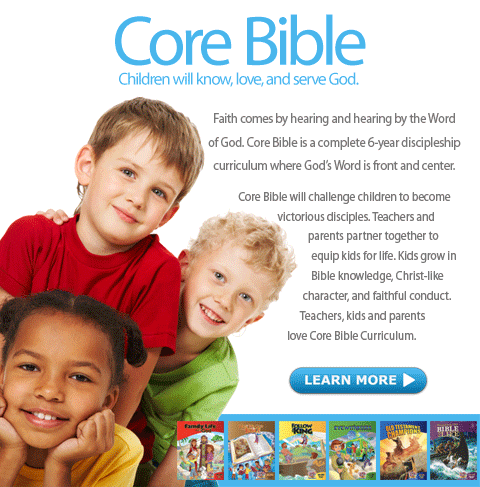Evaluating and choosing a discipleship curriculum is not an easy task, but making wise decisions about your curriculum will have an impact for generations to come. In the following article, GJ Farmer provides 5 characteristics of a great curriculum.
1. Biblically Accurate and Applicable
This is by far the most crucial aspect in choosing a curriculum. Because most children do not yet have the ability to think abstractly and some can’t even read, being accurate to the Scripture is very important. Children, parents, and God trust us to teach children the truth and we should not take that trust lightly. A great curriculum will focus on children learning the Scripture and not just having fun. The whole council of God should be included in the Scope and Sequence of the curriculum. If you find that it is too focused on familiar “children’s” Bible stories and that it does not include stories that span throughout the entire Bible then you should probably move on to another curriculum. These stories should also be applicable to the children in classroom. The Bible is more than a storybook. We must teach Scripture to help children encounter it’s life-changing power and apply it. Look for a curriculum with lessons that help children apply the Scripture to their lives.
Questions to consider:
- Does this curriculum focus on Scripture and communicate the details of stories accurately?
- Does this curriculum focus on the Bible as a whole?
- Does this curriculum have the gospel at the center or is it based mostly on developing good morals?
- Does this curriculum give the teacher a chance to share the gospel regularly?
- Will children leave the classroom knowing how to apply what they learned?
2. Conducive to All Learning Styles
A great curriculum won’t leave anyone out. In any given classroom there will be a representation of several learning styles. Depending on the child, his or her favorable learning style may be Auditory (learns best by listening), Kinesthetic (learns best through hand-on activities), or Visual (learns best through sight). Because every child is different, a great curriculum takes every child into account and gives opportunities for each one to connect with the lesson through his or her preferred learning style.
Questions to consider:
- Do lessons include activities that connect with all learning styles?
- Are the learning styles evenly represented in each lesson?
3. Enjoyable
Kids learn better if they are enjoying themselves. This doesn’t mean that everything has to be about fun and games all the time, but activities and videos can help children have fun while they are learning. One thing to remember while looking at the “fun” parts of the lesson is that an activity will either enhance the lesson or distract from it. Lesson-enhancing activities connect the activity to the main principles in the lesson while lesson-distracting activities cause the student’s focus to be taken entirely off the lesson.
Questions to consider:
- Does this curriculum include activities in every lesson?
- Do the activities enhance or distract from the lesson?
- Are the activities age appropriate for the children in your ministry?
4. Easy to Use
Volunteers are the ones who make our children’s ministries happen. We should never take them for granted. This means we should always be looking out for them when it comes to lesson preparation and actually using the curriculum. A great curriculum will include a personal devotion for the teacher to use in his or her own quiet time, some type of commentary for the Scripture being covered that week, and all the details needed to pull off a great lesson. Easy to use doesn’t necessarily mean that a teacher should just be able to pick up the lesson and teach it, with no preparation (Do you REALLY want them doing this anyway?). Easy to use means it is well organized and gives them everything they need to teach the lesson.
Questions to consider:
- What do your volunteers like/dislike about your current curriculum?
- How do your volunteers prefer to receive their curriculum (digital or hard copy)?
- Will your ministry format require you to customize the lesson to make it easier for your teachers?
5. Relevant Media
This characteristic is the least important, because you can always supplement the media if you have to. However, in a fast-paced culture that is always changing it is important that our curriculum stays up-to-date with modern graphics and media. You may have liked the felt-board when you were younger, but chances are the kids in your classroom won’t. We must stay relevant with modern culture in how we present our information.
Questions to consider:
- When you compare the graphics and media included in this curriculum with current magazines, music, and TV shows how does it look?
- What are your volunteers’ opinions on the media presentations?
- If you must supplement other media into the lessons, where will you get that media?
————-
Related Article: God’s Goal for Children
Article used with permission. GJ Farmer. Childrensministryblog.com










I think that this post is very well written and helpful. You have made it readable and understandable for any new Kids Ministry Director or Pastor to apply to their own ministry. Well done!